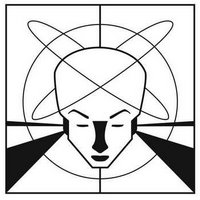Sexual arousal disorder is a disorder found in the DSM-IV that is generally defined as the inability to attain or maintain typical responses to sexual arousal.
What is a sexual arousal disorder?
You have a sexual arousal disorder when you continuously every time and again don't get a good physical reaction from sexual stimulation. This means that the woman's vagina doesn't get wet enough and that the man has problems with his erection at sexual stimulation. In order to get sexually aroused, something physical and something mental must happen to you. Changes of the body that usually happen when sexually aroused are a faster breathing, a faster heart beat, an increase in the saturation of the blood in the penis which makes it stiff, the woman's vagina getting wet.
These problems often occur in combination with a reduced interest to make love, sexual aversion or orgasm problems. For men we talk about an erection disorder; for women we talk about an arousal disorder. These specific forms of arousal disorders are being discussed in other questions.
Female sexual arousal disorder is the condition of decreased, insufficient, or absent lubrication in females during sex. It is sometimes used in reference to, and sometimes differentiated from, hypoactive sexual desire disorder, which is the condition of decreased interest in sexual intercourse, sexual activity, and sexual contact in females. Loss of interest in sex occurs most commonly in women as they age and approach menopause.
Although female sexual dysfunction is currently a contested diagnostic, pharmaceutical companies are beginning to promote products to treat FSD, often involving low doses of testosterone.
The term is often used to diagnose women (as the term erectile dysfunction (ED) is often used for men), particularly those with sexual symptoms such as:
How do you notice that a woman has problems with getting aroused?
Sexual arousal disorders in women become evident by the vagina not getting wet (enough) More in reaction to a sexual stimulus (for example caressing, watching a movie scene, making love).
Lack of vaginal lubrication
Lack of vaginal dilation or lengthening
Decreased genital tumescence
Decreased genital or nipple sensation
Contrary to popular belief, the disorder is not always caused from a lack of sexual arousal. Possible causes of sexual arousal disorder include psychological and emotional factors, such as depression, anger, and stress; relationship factors, such as conflict or lack of trust; and medical factors, such as depleted hormones, reduced regional blood flow, and nerve damage.
Diagnosis
It is, therefore, important for a licensed psychologist to first remove doubt of psychological or emotional problems, a trained sex therapist to then remove doubt of relationship concerns, and a medical doctor to further investigate medical causes.
Treatment
Depending on the cause of the disorder, hormone therapy or a blood-flow enhancing medication, like Viagra, may be appropriate.
A new medication, bremelanotide (formerly PT-141), is directly increasing sexual desire in both males and females, and is currently in clinical tests.
What is a sexual arousal disorder?
You have a sexual arousal disorder when you continuously every time and again don't get a good physical reaction from sexual stimulation. This means that the woman's vagina doesn't get wet enough and that the man has problems with his erection at sexual stimulation. In order to get sexually aroused, something physical and something mental must happen to you. Changes of the body that usually happen when sexually aroused are a faster breathing, a faster heart beat, an increase in the saturation of the blood in the penis which makes it stiff, the woman's vagina getting wet.
These problems often occur in combination with a reduced interest to make love, sexual aversion or orgasm problems. For men we talk about an erection disorder; for women we talk about an arousal disorder. These specific forms of arousal disorders are being discussed in other questions.
Female sexual arousal disorder is the condition of decreased, insufficient, or absent lubrication in females during sex. It is sometimes used in reference to, and sometimes differentiated from, hypoactive sexual desire disorder, which is the condition of decreased interest in sexual intercourse, sexual activity, and sexual contact in females. Loss of interest in sex occurs most commonly in women as they age and approach menopause.
Although female sexual dysfunction is currently a contested diagnostic, pharmaceutical companies are beginning to promote products to treat FSD, often involving low doses of testosterone.
The term is often used to diagnose women (as the term erectile dysfunction (ED) is often used for men), particularly those with sexual symptoms such as:
How do you notice that a woman has problems with getting aroused?
Sexual arousal disorders in women become evident by the vagina not getting wet (enough) More in reaction to a sexual stimulus (for example caressing, watching a movie scene, making love).
Lack of vaginal lubrication
Lack of vaginal dilation or lengthening
Decreased genital tumescence
Decreased genital or nipple sensation
Contrary to popular belief, the disorder is not always caused from a lack of sexual arousal. Possible causes of sexual arousal disorder include psychological and emotional factors, such as depression, anger, and stress; relationship factors, such as conflict or lack of trust; and medical factors, such as depleted hormones, reduced regional blood flow, and nerve damage.
Diagnosis
It is, therefore, important for a licensed psychologist to first remove doubt of psychological or emotional problems, a trained sex therapist to then remove doubt of relationship concerns, and a medical doctor to further investigate medical causes.
Treatment
Depending on the cause of the disorder, hormone therapy or a blood-flow enhancing medication, like Viagra, may be appropriate.
A new medication, bremelanotide (formerly PT-141), is directly increasing sexual desire in both males and females, and is currently in clinical tests.

0 Comments:
Post a Comment
Psychologist